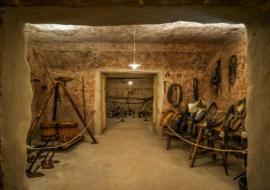History
Primitivo owes its name to the earliness of ripening grapes. The origins are uncertain, although some believe that the introduction in Puglia date back to the period of Phoenician colonization, or that has been imported by the Illyrians more than two thousand years ago. Others argue that it was introduced in the area of Gioia del Colle by Benedictine monks came from Burgundy four centuries ago.
What is certain is that at the end of the eighteenth century it was already known by the name of the Apulian countryside and the credit should be attributed to the archpriest Don Francesco Philip Indelicati, which contributed to the spread of Primitivo, when found and selected in old vineyards. The presence of these native plants suggests that the vine was cultivated for some time. During the nineteenth century later spread to the lands of Salento, Primitivo is also called Zagarese or Sagarese. At the end of the nineteenth century saw the beginning of the wide spread of the vine in the province of Taranto.
Spread
Primitivo is placed, with its 9,000 hectares of vineyards, among the top ten varieties grown in Italy. And 'widespread in the province of Taranto, in the area of Gioia del Colle, near Brindisi and in Salento, where you can also find in purity.
The plant
The bunch is of medium size, long, conical-cylindrical shape, medium compact and provided with one or two wings. The berries are spherical and of medium size, with a very waxy skin, medium thick and dark blue. All stages of the trend of growing Primitivo are early, the grapes are usually harvested between late August and early September. The racemes are the second result that some varieties grow in significant quantities on femminelle. These second-generation fruit ripen in twenty days away from the harvest of the primary clusters and are therefore harvested and vinified at a later stage, representing a second chance to improve or even recover the adverse events that occurred in the first fermentation.
Wine tasting
The vinification leading to an intense ruby purple color wine with intense fruity aromas, elegantly spicy, which close with sweet aromas of tobacco. The mouth is very concentrated but soft and calibrated same time, with a fruit velvety strengthened by a high alcohol content. The wine improves its characteristics when subjected to a suitable aging.

| << | January 2026 | >> | ||||
| Sun | Mon | Tue | Wed | Thu | Fri | Sat |
| 1 | 2 | 3 | ||||
| 4 | 5 | 6 | 7 | 8 | 9 | 10 |
| 11 | 12 | 13 | 14 | 15 | 16 | 17 |
| 18 | 19 | 20 | 21 | 22 | 23 | 24 |
| 25 | 26 | 27 | 28 | 29 | 30 | 31 |